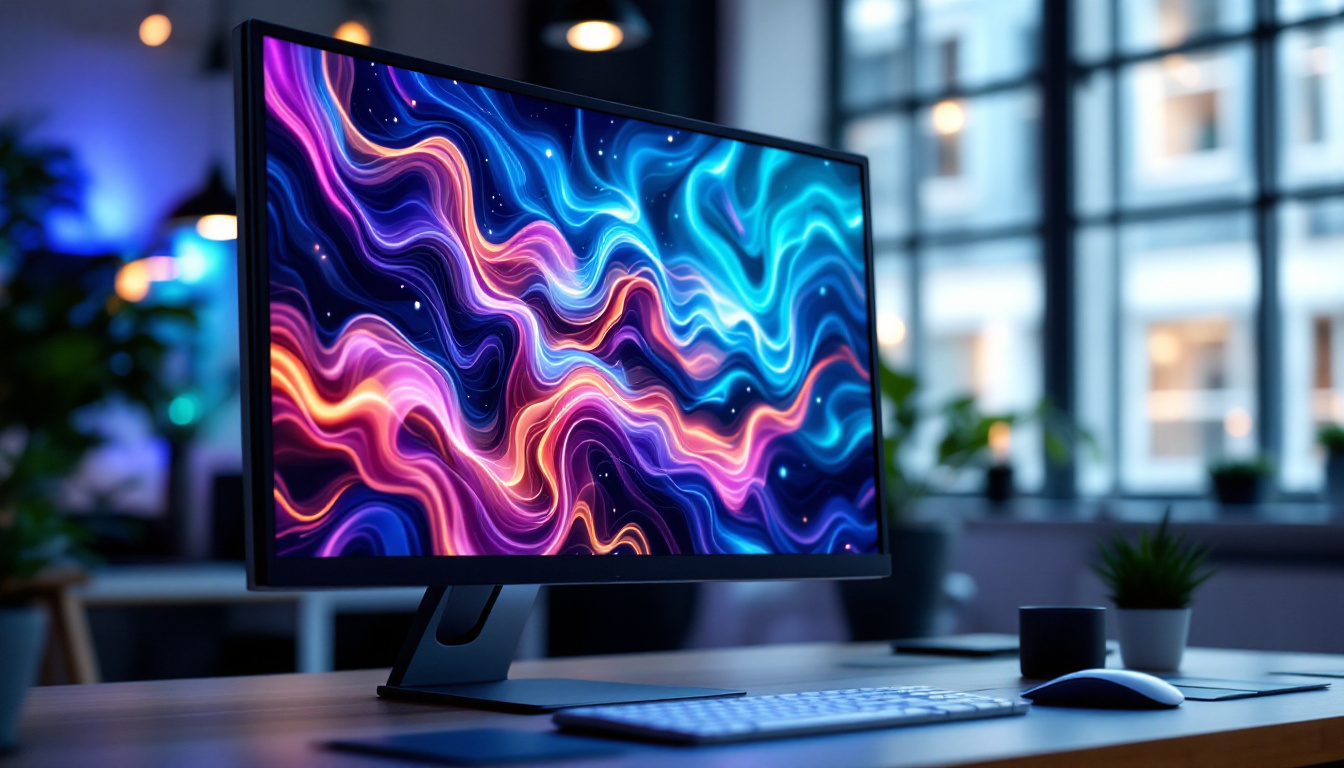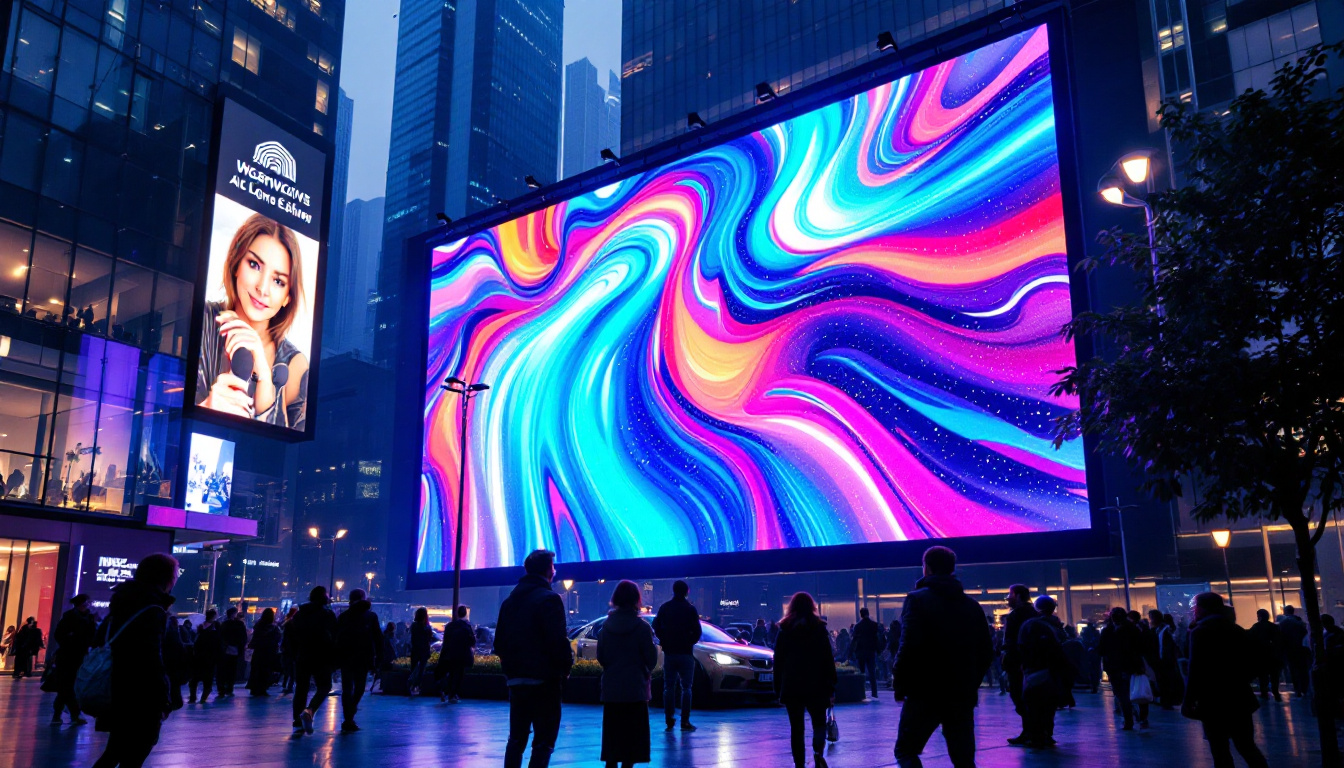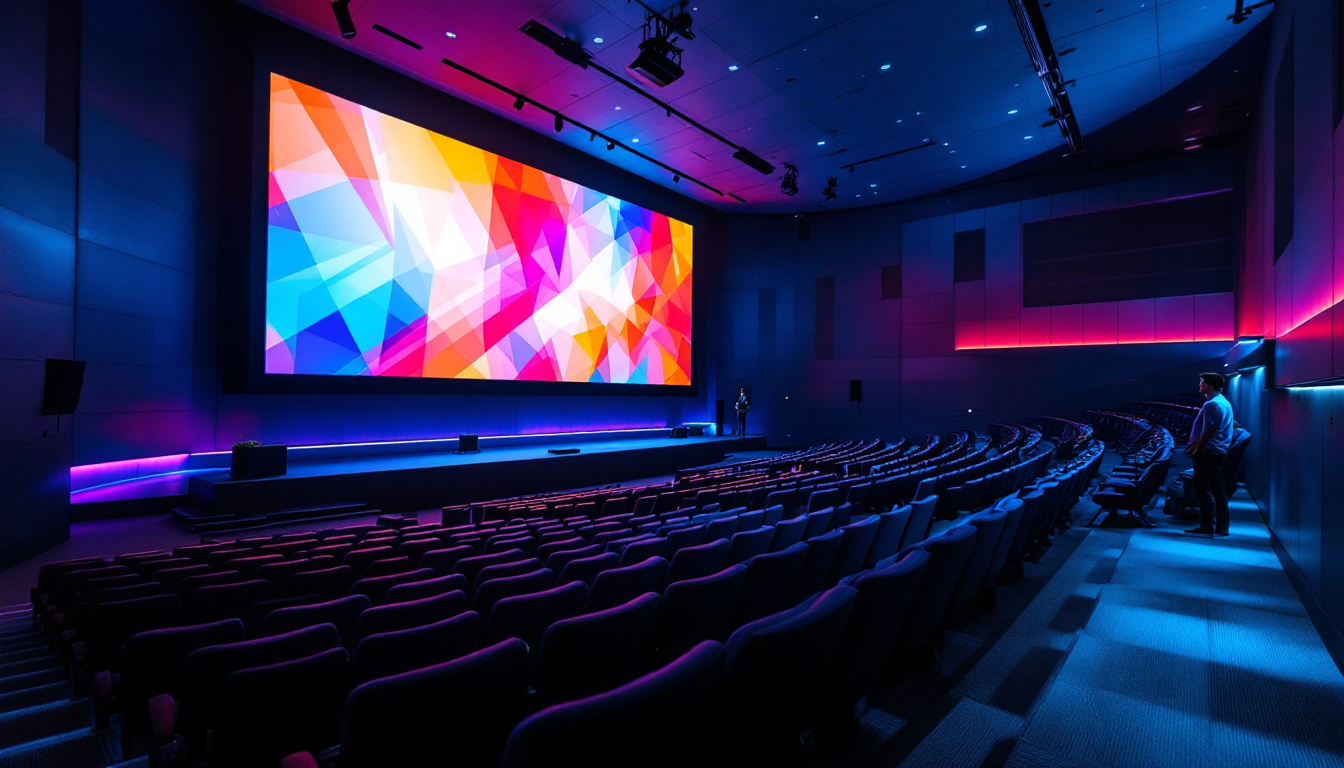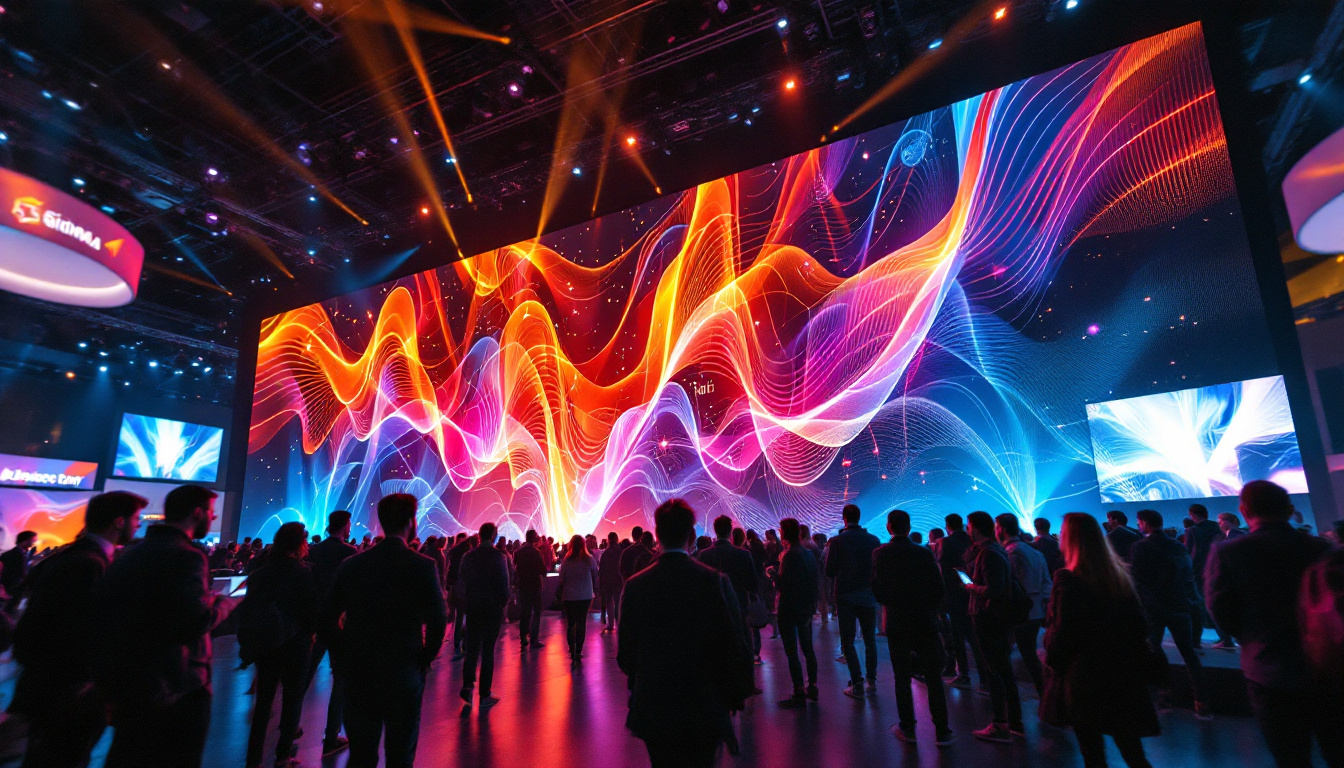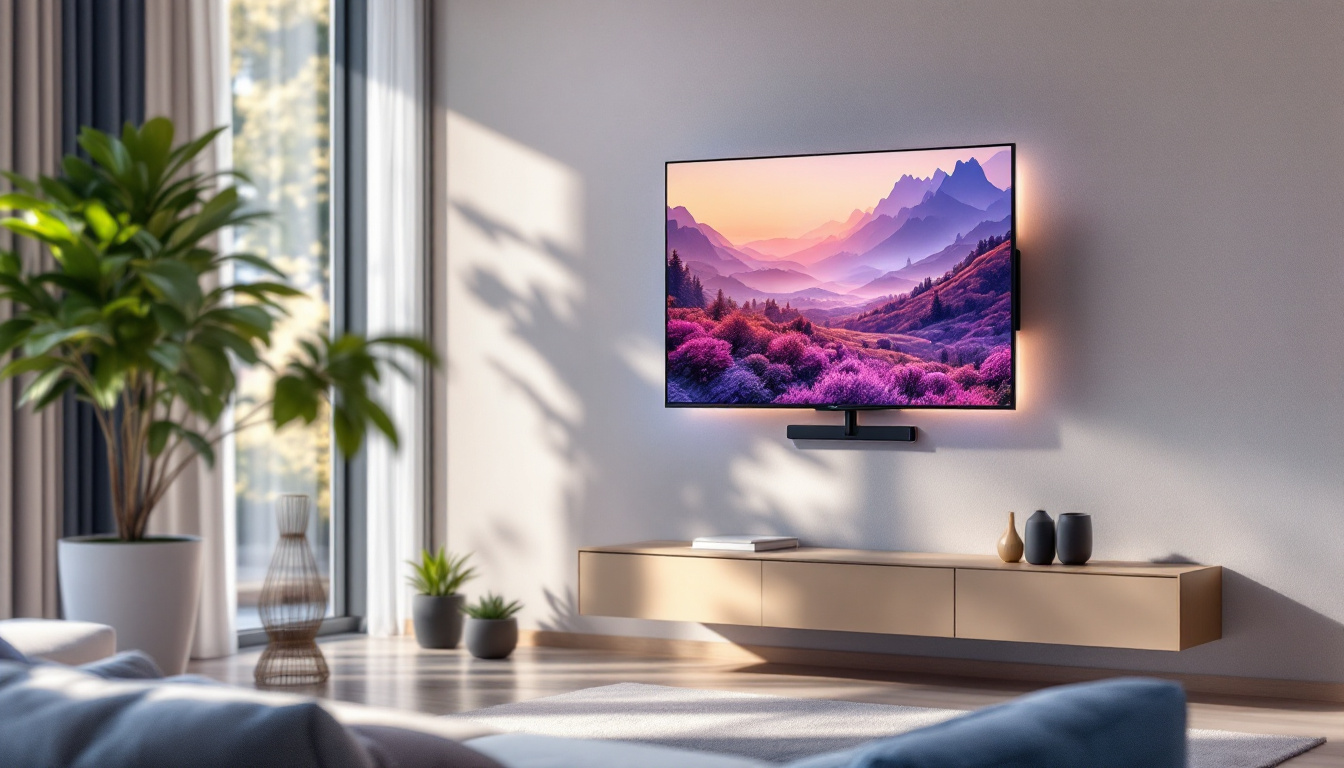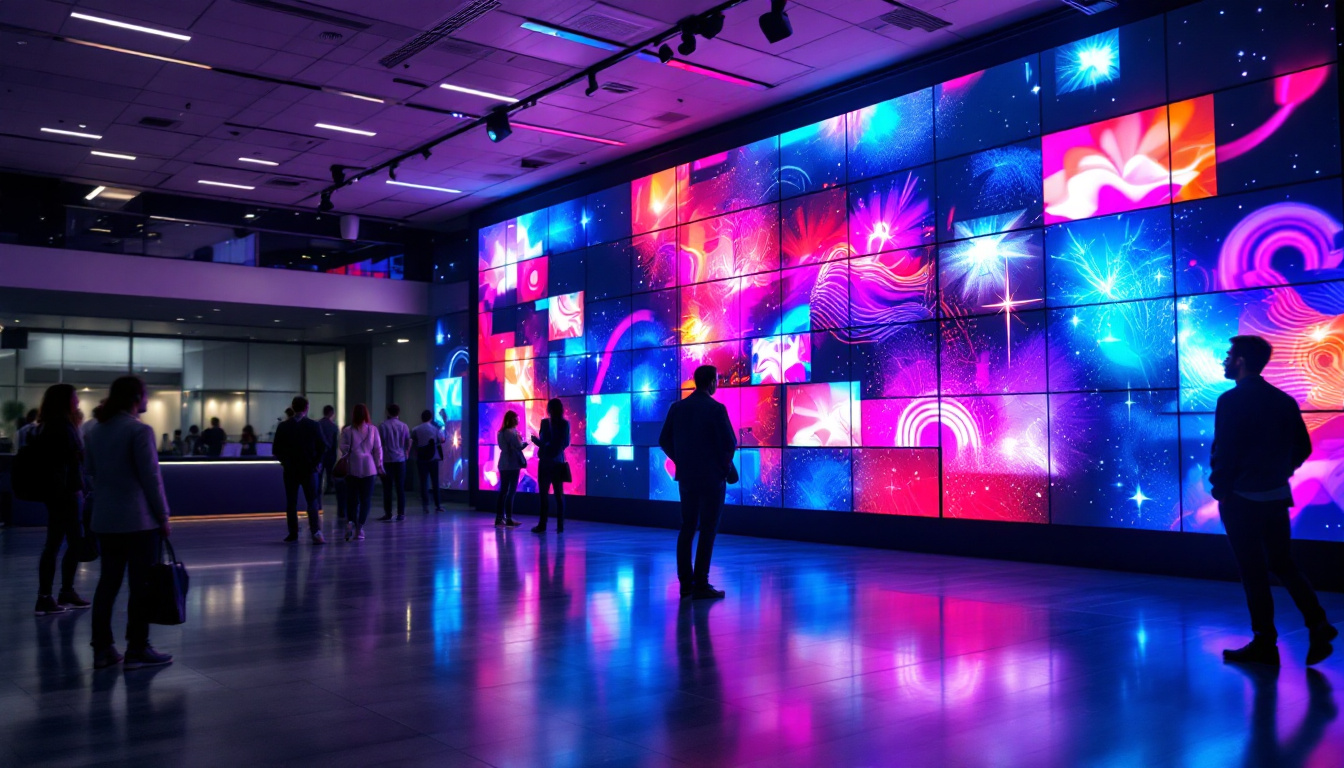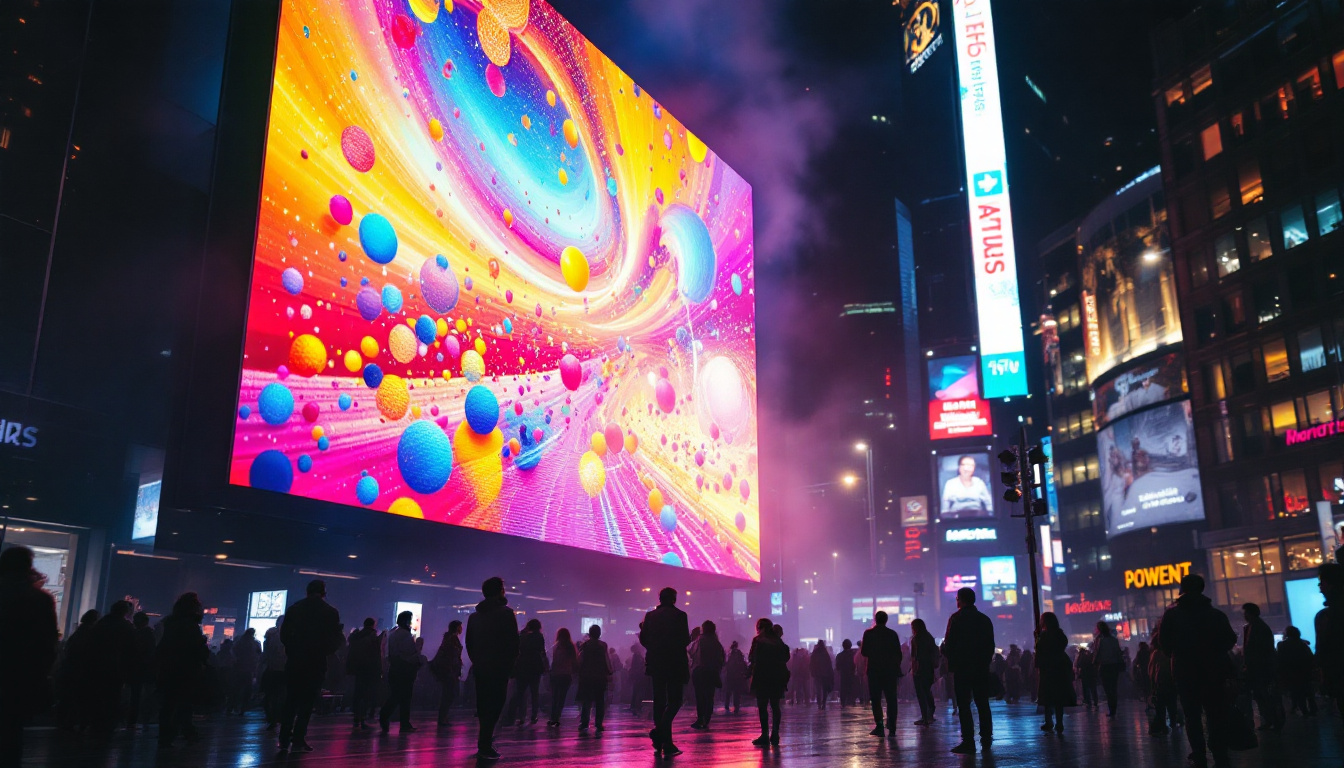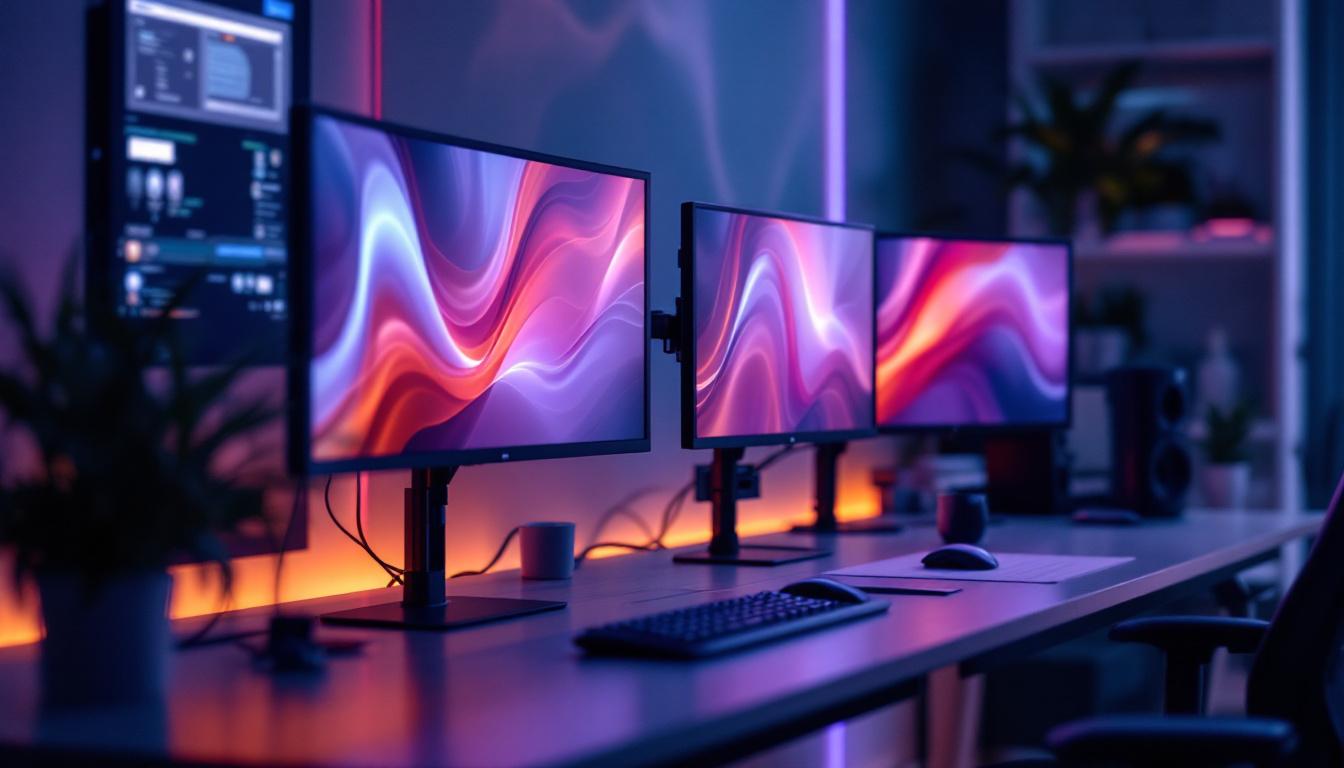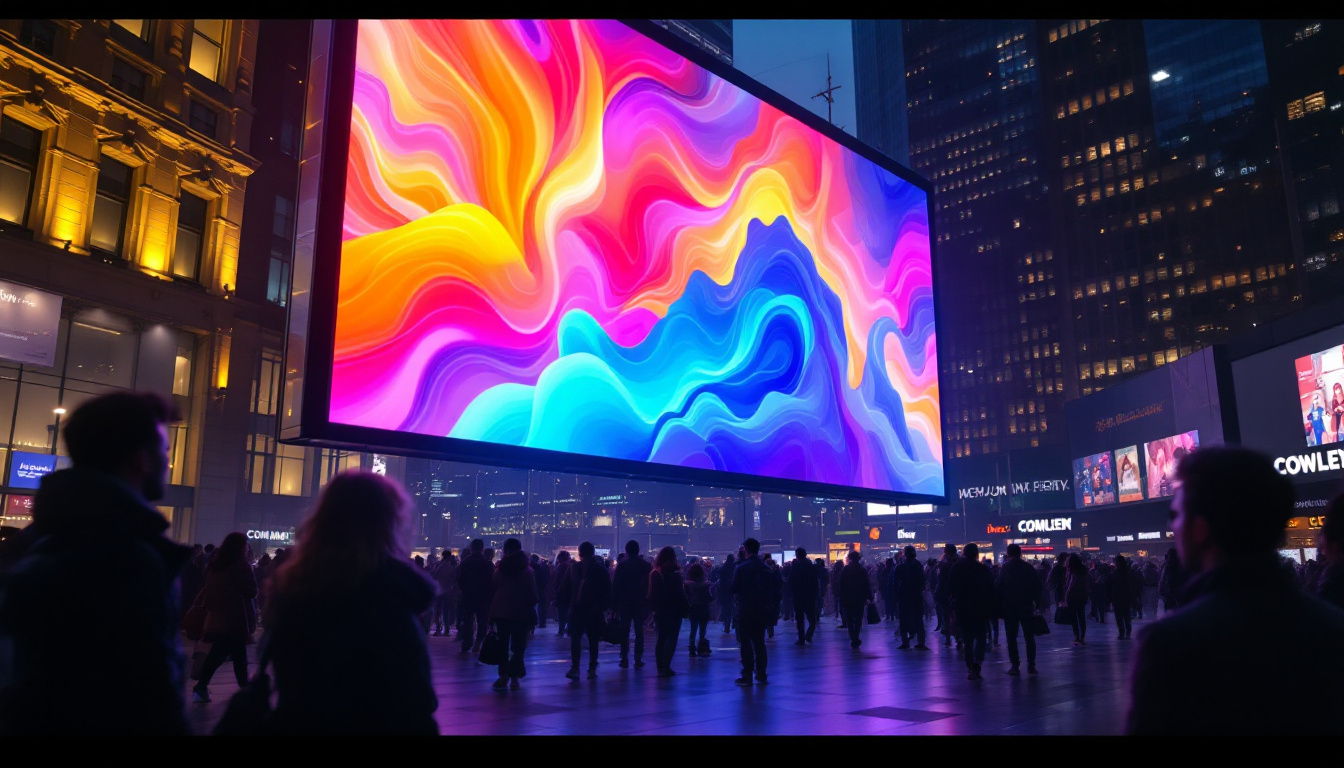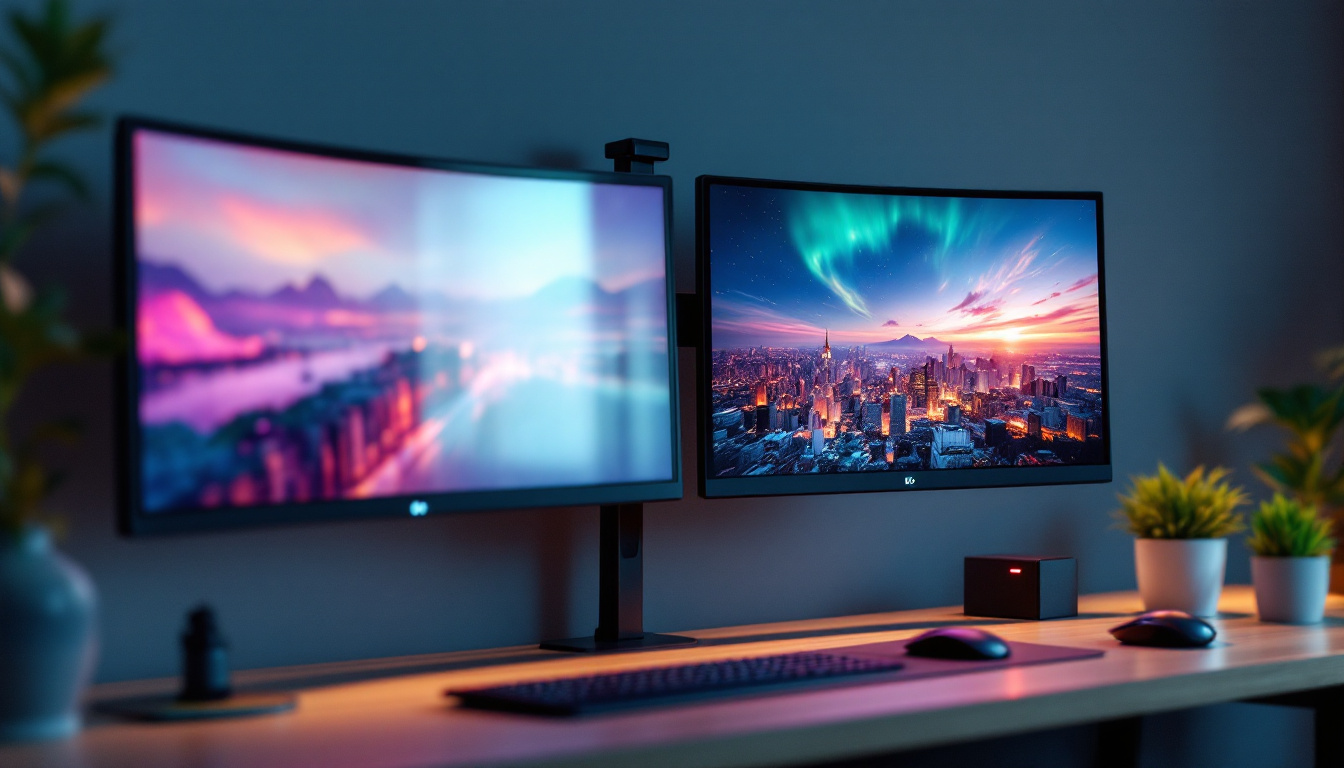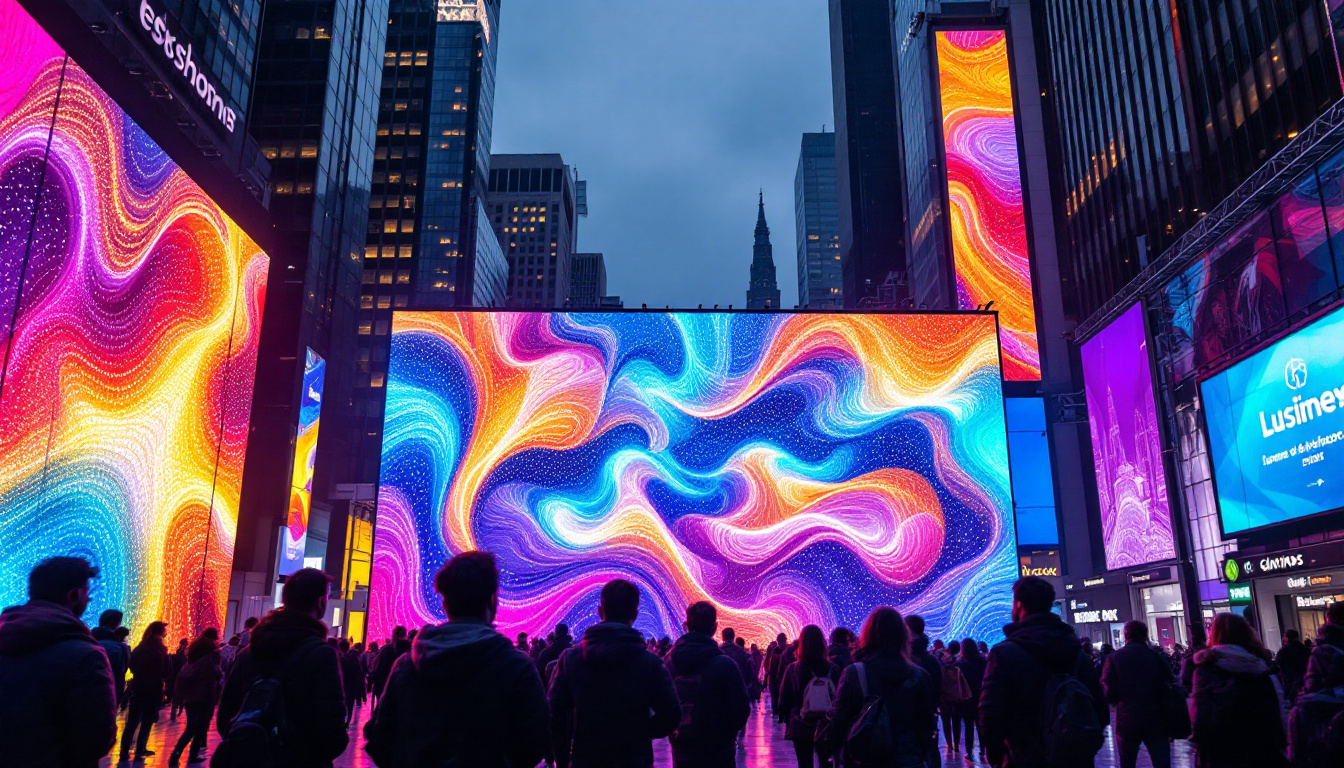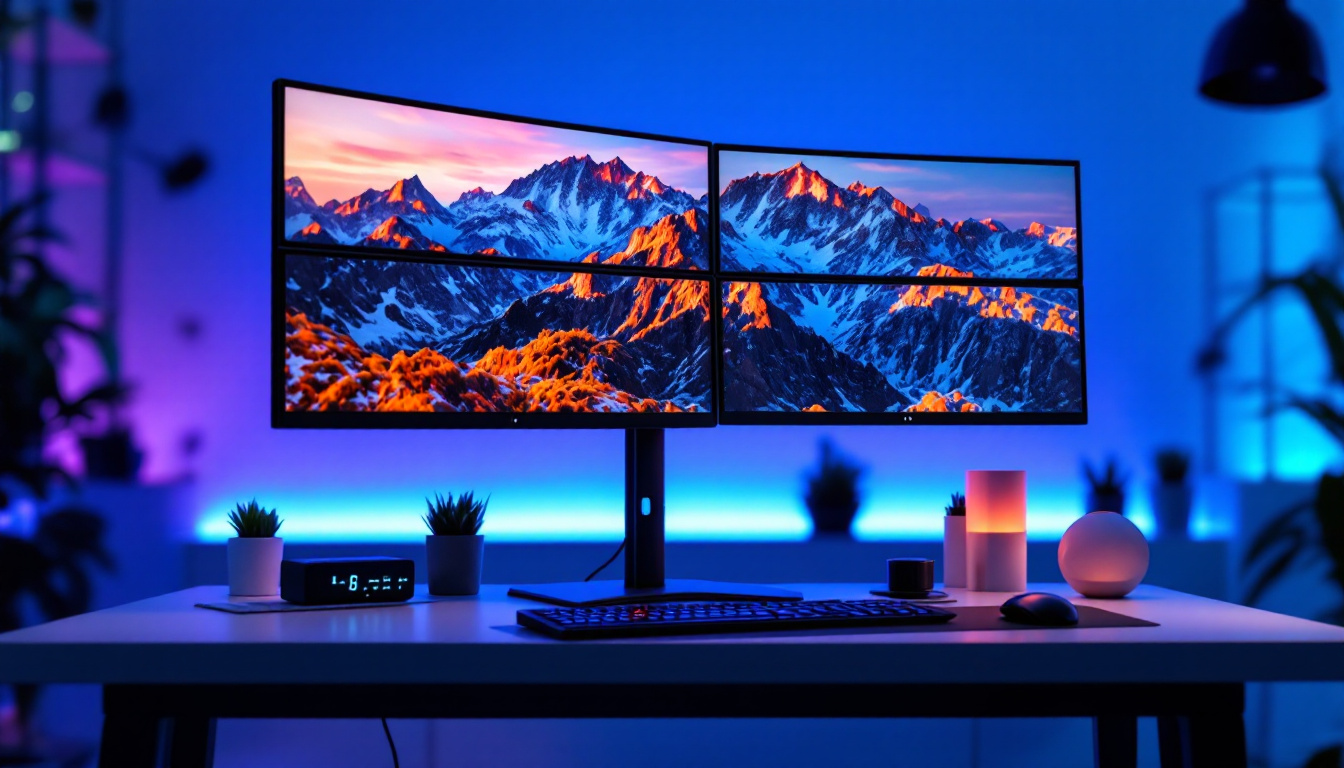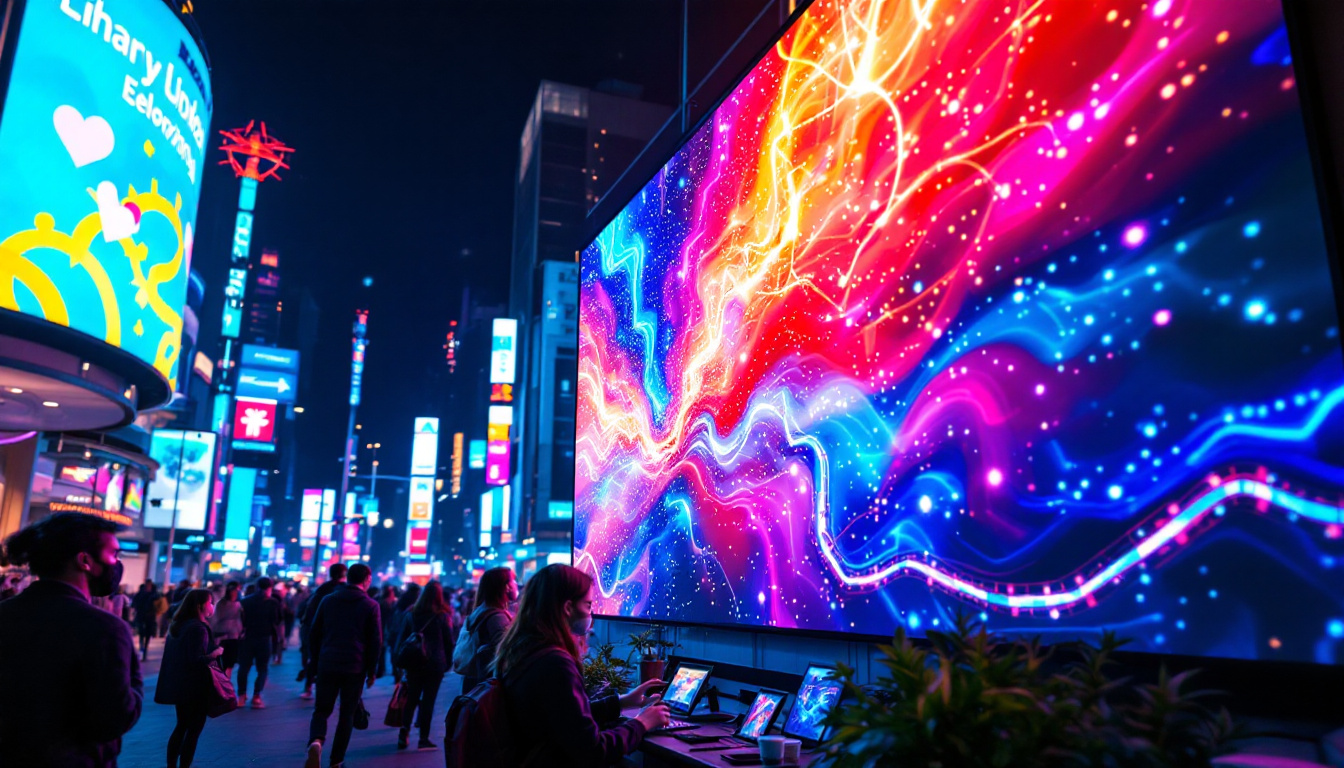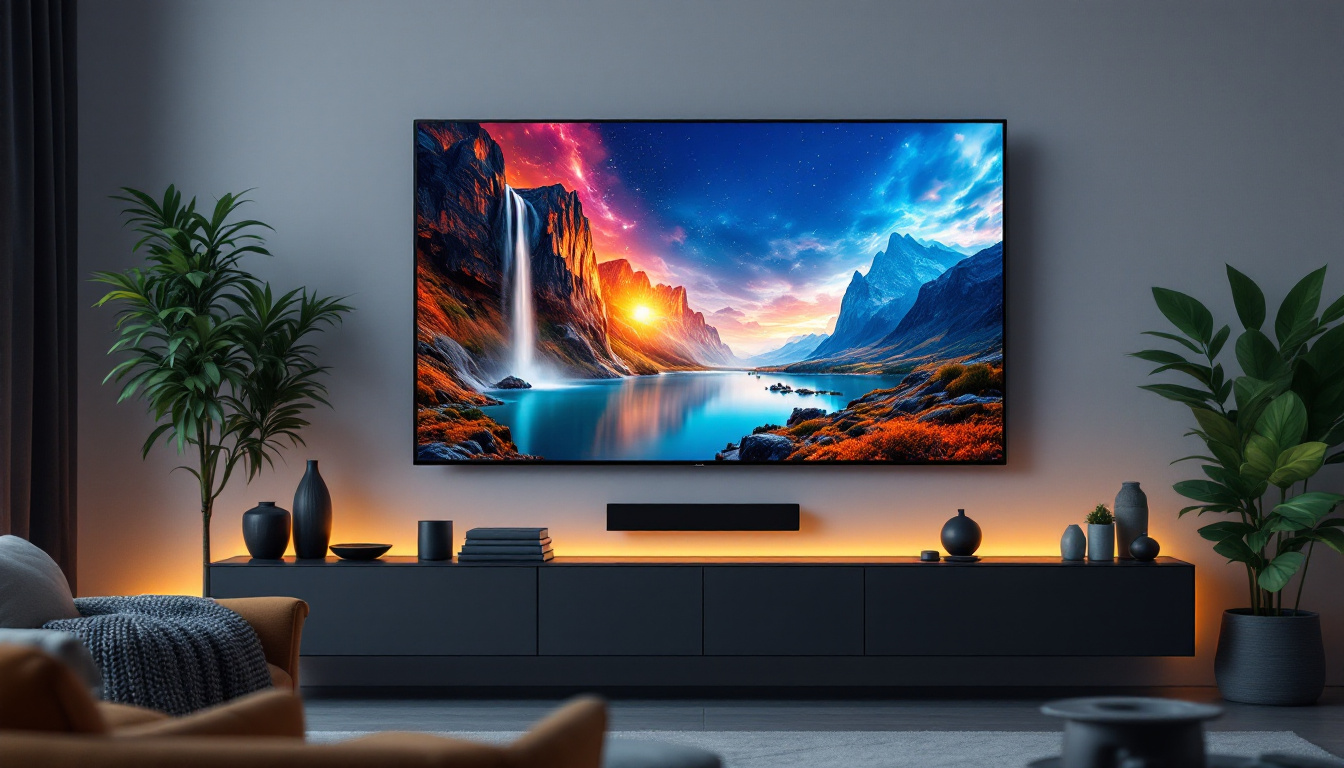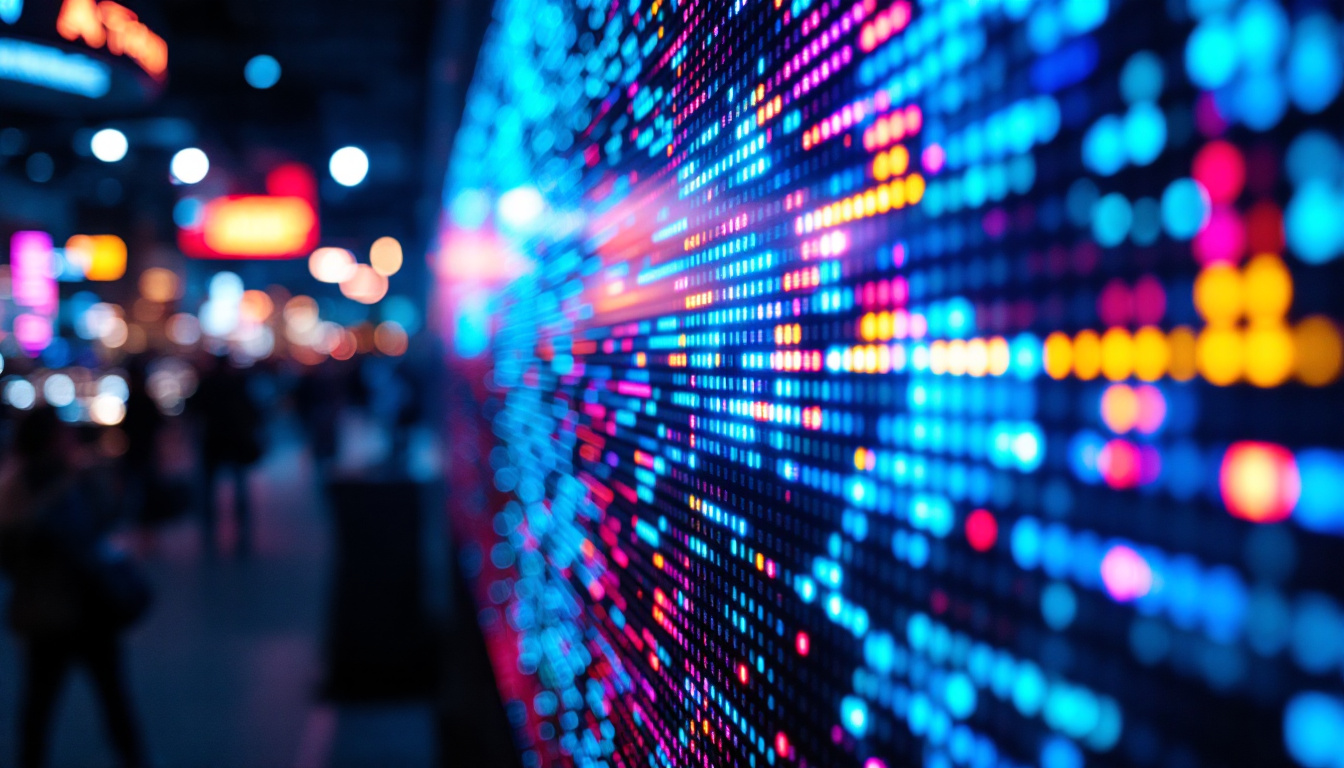In the realm of computer displays, the terms “LED” and “LCD” are often used interchangeably, leading to confusion among consumers. Understanding the nuances between these technologies is essential for making informed purchasing decisions. This article delves into the intricacies of LED LCD monitors, exploring their features, advantages, and how they differ from traditional LCD displays.
Understanding LCD Technology
Liquid Crystal Display (LCD) technology has been a cornerstone of modern display systems for decades. It operates by using liquid crystals that modulate light to produce images. The fundamental components of an LCD include a backlight, liquid crystal layer, and polarizers. While LCDs were revolutionary in their time, they have evolved significantly with the introduction of LED backlighting.
The Basics of LCD Operation
At the heart of LCD technology is the liquid crystal layer, which does not emit light on its own. Instead, it relies on a backlight, typically fluorescent tubes in earlier models, to illuminate the display. When an electric current passes through the liquid crystals, they align in a way that either blocks or allows light to pass through, creating the desired images on the screen.
This technology allows for thinner and lighter displays compared to traditional cathode ray tube (CRT) monitors. However, the quality of the image largely depends on the type of backlighting used. This is where LED technology comes into play.
The Transition to LED Backlighting
LED backlighting has transformed the LCD display landscape. Unlike traditional fluorescent backlights, LEDs (Light Emitting Diodes) provide several advantages, including improved brightness, energy efficiency, and a wider color gamut. This transition has led to the emergence of LED LCD monitors, which combine the benefits of both technologies.
LED backlighting can be implemented in two primary ways: edge-lit and full-array. Edge-lit displays use LEDs placed along the edges of the screen, while full-array displays have a grid of LEDs behind the entire screen. Full-array technology typically offers better contrast and uniformity, making it a preferred choice for high-end monitors.
Advantages of LED LCD Monitors
LED LCD monitors have gained popularity for various reasons, making them a preferred choice for both casual users and professionals. The following sections explore the key advantages that these monitors offer.
Enhanced Image Quality
One of the most significant benefits of LED LCD monitors is their enhanced image quality. The use of LED backlighting allows for brighter displays with better contrast ratios. This means that dark scenes appear deeper, while bright scenes are more vivid, resulting in a more immersive viewing experience.
Moreover, LED technology supports a wider color spectrum, enabling monitors to display more accurate and vibrant colors. This is particularly beneficial for graphic designers, photographers, and video editors who require precise color representation in their work.
Energy Efficiency
Energy efficiency is another compelling advantage of LED LCD monitors. Compared to traditional LCDs with fluorescent backlighting, LED monitors consume significantly less power. This not only reduces electricity bills but also contributes to a lower carbon footprint, making them an eco-friendly choice.
In addition, many LED LCD monitors come with energy-saving features, such as automatic brightness adjustment based on ambient lighting conditions. This ensures optimal performance while minimizing energy consumption.
Thin and Lightweight Design
The design of LED LCD monitors is another factor that appeals to consumers. With the absence of bulky components, these monitors are thinner and lighter than their predecessors. This makes them easier to transport and set up, especially in environments where space is limited.
Furthermore, the sleek design of LED LCD monitors enhances the aesthetic appeal of any workspace or home entertainment setup. They can be mounted on walls or placed on desks without taking up too much space, providing flexibility in arrangement.
Common Applications of LED LCD Monitors
LED LCD monitors are versatile and find applications in various fields. From professional settings to home entertainment, their adaptability makes them suitable for a wide range of users.
Professional Use
In professional environments, LED LCD monitors are indispensable tools for tasks that require precision and clarity. Graphic designers and video editors rely on the accurate color reproduction and high resolution that these monitors provide. Additionally, software developers benefit from the large screen real estate that allows for multitasking and efficient workflow.
Moreover, industries such as finance and engineering utilize LED LCD monitors for data analysis and visualization. The sharp images and crisp text enhance readability, reducing eye strain during long working hours.
Home Entertainment
For home users, LED LCD monitors serve as excellent displays for gaming, streaming, and general computing. Gamers appreciate the fast response times and high refresh rates that many LED LCD monitors offer, ensuring smooth gameplay and reduced motion blur.
Streaming enthusiasts benefit from the vibrant colors and high contrast ratios, making movies and TV shows visually stunning. Additionally, many monitors come equipped with features like built-in speakers and smart connectivity options, further enhancing the entertainment experience.
Educational Settings
In educational settings, LED LCD monitors are increasingly used for presentations and interactive learning. Their bright displays ensure visibility in various lighting conditions, making them suitable for classrooms and lecture halls. Teachers can utilize these monitors for multimedia presentations, engaging students with dynamic content.
Furthermore, the ability to connect to various devices, such as laptops and tablets, allows for seamless integration into the learning environment. This adaptability fosters collaboration and enhances the overall educational experience.
Choosing the Right LED LCD Monitor
When selecting an LED LCD monitor, several factors should be considered to ensure it meets specific needs and preferences. The following sections outline key features to look for when making a choice.
Screen Size and Resolution
The screen size and resolution are critical factors that influence the overall viewing experience. Larger screens provide more immersive experiences, while higher resolutions, such as Full HD (1920×1080) or 4K (3840×2160), offer greater detail and clarity.
For general use, a 24 to 27-inch monitor with Full HD resolution is often sufficient. However, professionals engaged in graphic design or video editing may prefer larger screens with higher resolutions to accommodate intricate details and enhance productivity.
Refresh Rate and Response Time
For gaming and fast-paced applications, the refresh rate and response time of a monitor are crucial. A higher refresh rate (measured in Hertz) results in smoother motion, while a lower response time (measured in milliseconds) reduces motion blur.
Monitors with refresh rates of 144Hz or higher are ideal for gamers, as they provide a competitive edge in fast-paced scenarios. Additionally, a response time of 5ms or lower is recommended for a seamless experience.
Connectivity Options
Connectivity options are essential for ensuring compatibility with various devices. Look for monitors that offer multiple input ports, such as HDMI, DisplayPort, and USB-C. This versatility allows users to connect laptops, gaming consoles, and other peripherals without hassle.
Additionally, built-in features like USB hubs can enhance convenience by providing easy access to USB ports for charging and data transfer.
Maintenance and Care for LED LCD Monitors
To ensure the longevity and optimal performance of LED LCD monitors, proper maintenance and care are essential. Simple practices can significantly enhance the lifespan of these devices.
Cleaning the Screen
Regular cleaning of the monitor screen is crucial to maintain clarity and prevent dust buildup. Use a microfiber cloth and a gentle cleaning solution specifically designed for screens. Avoid using harsh chemicals or abrasive materials that could damage the display.
It is advisable to turn off the monitor before cleaning to avoid any potential damage and to ensure a thorough clean. Gently wipe the screen in circular motions, taking care not to apply excessive pressure.
Adjusting Settings
Adjusting the monitor settings can enhance the viewing experience and reduce eye strain. Most monitors come with preset modes for different activities, such as reading, gaming, or movie watching. Experimenting with these settings can help find the most comfortable configuration.
Additionally, consider adjusting the brightness and contrast levels based on the ambient lighting conditions. This not only improves visibility but also contributes to energy efficiency.
Regular Updates and Calibration
For professionals who rely on color accuracy, regular calibration of the monitor is essential. Calibration tools can help ensure that the colors displayed are true to life, which is particularly important for graphic design and photography.
Moreover, keeping the monitor’s firmware updated can enhance performance and introduce new features. Manufacturers often release updates that address bugs and improve compatibility with new devices.
The Future of LED LCD Technology
The landscape of display technology continues to evolve, and LED LCD monitors are no exception. As advancements in technology emerge, several trends are shaping the future of LED LCD displays.
Mini-LED and Micro-LED Innovations
Mini-LED and Micro-LED technologies are gaining traction as potential successors to traditional LED backlighting. Mini-LED utilizes smaller LEDs to enhance local dimming capabilities, resulting in improved contrast ratios and better overall image quality.
Micro-LED, on the other hand, represents a more radical shift. It uses tiny self-emitting LEDs to create images without the need for a backlight. This technology promises even greater color accuracy, deeper blacks, and energy efficiency, positioning it as a game-changer in the display industry.
Increased Integration with Smart Features
As smart technology continues to permeate various aspects of daily life, LED LCD monitors are also becoming more integrated with smart features. Many modern monitors now come equipped with built-in streaming capabilities, voice control, and connectivity with smart home devices.
This trend is likely to continue, making monitors not just displays but central hubs for entertainment and productivity in the home and office.
Focus on Sustainability
With growing awareness of environmental issues, manufacturers are increasingly focusing on sustainability in their products. Future LED LCD monitors are expected to incorporate eco-friendly materials and energy-efficient technologies, aligning with consumer demand for greener options.
As technology progresses, the commitment to sustainability will likely play a significant role in shaping the future of LED LCD displays, appealing to environmentally conscious consumers.
Conclusion
LED LCD monitors represent a significant advancement in display technology, combining the benefits of LCD and LED to deliver superior image quality, energy efficiency, and sleek designs. Understanding the intricacies of these monitors allows consumers to make informed choices based on their specific needs, whether for professional use, home entertainment, or educational purposes.
As technology continues to evolve, the future of LED LCD monitors looks promising, with innovations such as Mini-LED and Micro-LED on the horizon. By staying informed about these developments, users can ensure they are equipped with the best tools for their digital experiences.
In the end, whether for work or play, investing in a quality LED LCD monitor can significantly enhance the overall computing experience, making it a worthwhile consideration for anyone in the market for a new display.
Discover the Future of Visual Display with LumenMatrix
Ready to experience the pinnacle of display technology? LumenMatrix is at the forefront of LED innovation, offering a diverse range of LED display solutions tailored to your unique needs. Whether you’re looking to elevate your professional workspace, enrich your home entertainment system, or engage audiences in educational settings, our cutting-edge LED display modules are designed to deliver unparalleled visual impact. From Indoor and Outdoor LED Walls to Custom and All-in-One LED Displays, our mission is to transform your visual communication with clarity and vibrancy. Check out LumenMatrix LED Display Solutions and step into a world where every pixel tells a story.

